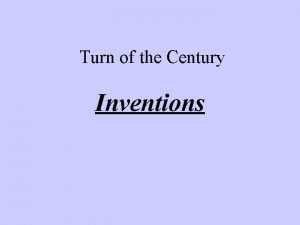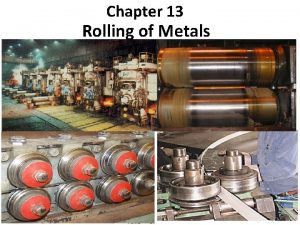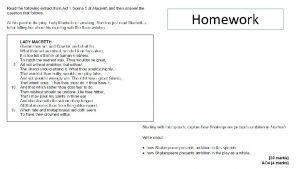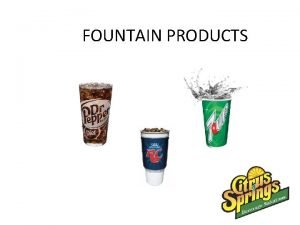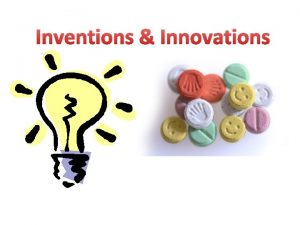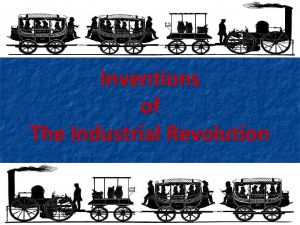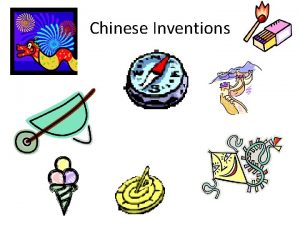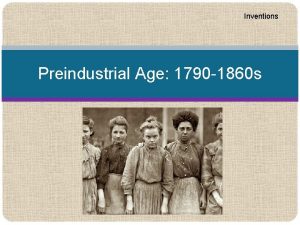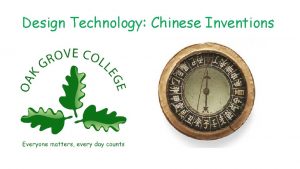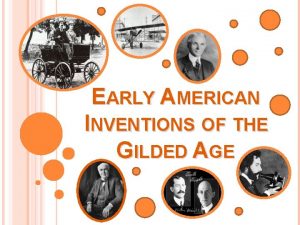Turn of the Century Inventions Fountain pen Zipper

























- Slides: 25

Turn of the Century Inventions

Fountain pen • • • • • • Zipper Rubber tires used on bicycles Carburetor Diesel engine X-ray Radio Cold cereal Aspirin Magnetic tape recorder Rubber heel (for shoe/boot) Movie projector Wireless radio telegraph Photoelectric cell Milk safety test Thermite (industrial material) Self-powered model airplane Bolt action rifle Motion picture camera Data processing machine Photocopying machine Bridle bit (for horse) Desk top pencil sharpener Dust pan • • • • • • Golf tee Dry cell battery (Ever Ready) Steel-framed skyscraper American Express Travelers Cheques Book matches Hershey chocolate bar Cathode-ray tube Jell-o Roll film Vacuum cleaner First American subway built Cracker Jack Peanut agricultural science Dirgible Dixie cup (paper cup) Dishwasher Peep show Escalator Gasoline powered car Player piano Submarine Double-edge safety razor

Aspirin In 1899, a German chemist named Felix Hoffmann, who worked for a German company called Bayer, rediscovered Gerhardt's formula. Felix Hoffmann made some of the formula and gave it to his father who was suffering from the pain of arthritis. With good results, Felix Hoffmann then convinced Bayer to market the new wonder drug. Aspirin was patented on March 6, 1889. The folks at Bayer came up with the name Aspirin, it comes from the 'A" in acetyl chloride, the "spir" in spiraea ulmaria (the plant they derived the salicylic acid from) and the 'in' was a then familiar name ending for medicines. Aspirin was first sold as a powder. In 1915, the first Aspirin tablets were made. Interestingly, Aspirin ® and Heroin ® were once trademarks belonging to Bayer. After Germany lost World War I, Bayer was forced to give up both trademarks as part of the Treaty of Versailles in 1919.

Vacuum Cleaner In 1901 Booth patented his vacuum cleaner The first cleaner worked out rather expensive at around £ 350. The bright red horse-drawn machine measured 4' 6" x 4' 10" x 3' 6" and the large suction pump was driven by a five horsepower piston engine. The machine toured the streets with a team of of men in white drill suits. On finding a potential customer, the salesmen demonstrated their wares by throwing street dirt onto people's carpets. The gasoline motor started, and long hoses were strung in through the windows attached to a hollow container where the dirt was collected. The 'suction' was essentially similar to the 'suction' of an air compressor. Little more than surface dirt and dust were removed.

Fountain Pen Lewis Waterman, an insurance salesman, was inspired to improve the early fountain pen designs after destroying a valuable sales contract with leaky-pen ink. Waterman patented the first practical fountain pen in 1884. Ball Point Pen wasn’t invented until 1938

The history of the HERSHEY'S milk chocolate bar can't be told without telling the story of Milton S. Hershey. In 1900, Milton S. Hershey developed the recipe for what would become a great American classic. He was driven by the belief that everyone should be able to enjoy the great taste of milk chocolate, something at the time only enjoyed by the wealthy. 1907 – Hershey Kisses Introduced

Telephone Alexander Graham Bell was awarded the U. S. patent for the invention of the telephone in 1876

In 1897, Pearle Wait, a carpenter in Le. Roy, was putting up a cough remedy and laxative tea in his home. He experimented with gelatine and came up with a fruit flavored dessert which his wife, May, named Jell-O. He tried to market his product but he lacked the capital and the experience. In 1899 he sold his formula to a fellow townsman for the sum of $450. The first four Jell-O flavors were orange, lemon, strawberry, and raspberry.

Golf Tee Bloxsom/Douglas tee (1889) Tees sat on top of the ground like a tripod.

Tees that sat on top of the ground had an annoying tendency to fly away upon getting smacked with the club. A solution, advertised in British golf journals of the 1890 s, was the use of peg-shaped tees that could be pushed into the ground. The first of these gadgets to hit the market was the "Perfectum, " a rubber-and-iron peg with a crown of rubber pins upon which the ball rested. Its inventor was Percy Ellis of Surrey, England, who took out a British patent for his creation in 1892. The related "Victor" tee, with a cup-shaped rubber head and metal spike base, was patented in 1897 by PM Matthews of Scotland.

Ellis's "Perfectum" (1892) Matthews' "Victor" (1897) Grant's tee (1899) Ellis's "Perfectum" (1892) Matthews' "Victor" (1897) Lowell's "Reddy Tee" (1922)

History of the Typewriter

In 1714, the last year of her reign, Queen Anne granted a patent to Henry Mill typesetting machine

BAR LOCK No 3 Circa 1891

Daugherty - 1890

Williams Circa 1891

Oliver - 1891

Emerson - 1907

The Zipper 1893 - Whitcomb Judson 'Clasp Locker'

Swedish-born (who later immigrated to Canada), Gideon Sundback, an electrical engineer, came up with the modern zipper design and this is the 1917 patent. The popular 'zipper' name came from the B. F. Goodrich Company, when they decided to use Gideon's fastener on a new type of rubber boots or galoshes and renamed the device the zipper, the name that lasted. Boots and tobacco pouches with a zippered closure were the two chief uses of the zipper during its early years. It took twenty more years to convince the fashion industry to seriously promote the novel closure on garments.

Bicycle


Then… Now…

Soon…

Sideways Bike
 Clasp locker
Clasp locker Pen pen de sarapen de kutsilyo
Pen pen de sarapen de kutsilyo Palm grasp in dentistry
Palm grasp in dentistry Onomatopoeia
Onomatopoeia Gilles zipper
Gilles zipper Sam zipper kansas
Sam zipper kansas Pierce
Pierce Hot rolling
Hot rolling What type of simple machine is a zipper
What type of simple machine is a zipper Zipper uitvloeier
Zipper uitvloeier How to use a urinal without a zipper
How to use a urinal without a zipper Ilan
Ilan What lie did captain beatty tell montag
What lie did captain beatty tell montag Fytostat
Fytostat Stephan zipper
Stephan zipper Zipper pull adaptive equipment
Zipper pull adaptive equipment Turn the arrow 1/4 turn clockwise
Turn the arrow 1/4 turn clockwise Turn hell hound turn
Turn hell hound turn You can't turn right here
You can't turn right here O valiant cousin worthy gentleman
O valiant cousin worthy gentleman Tomato flames flaps
Tomato flames flaps Hellhound macbeth
Hellhound macbeth Turn hell hound turn
Turn hell hound turn Quarter turn half turn
Quarter turn half turn Answer. go straight turn left turn right
Answer. go straight turn left turn right Go straight and turn right
Go straight and turn right
